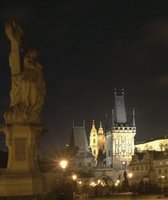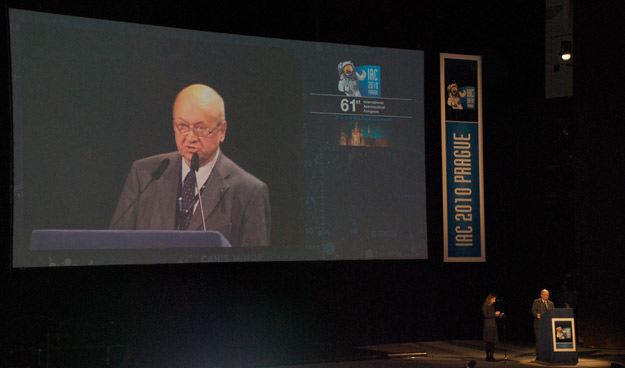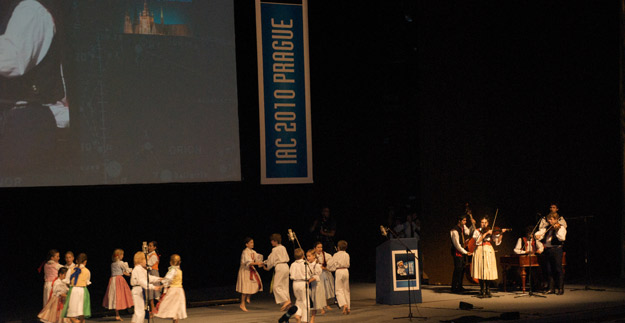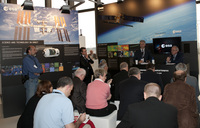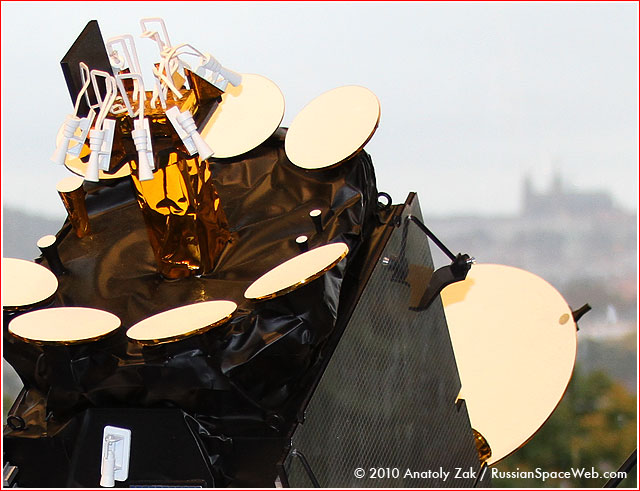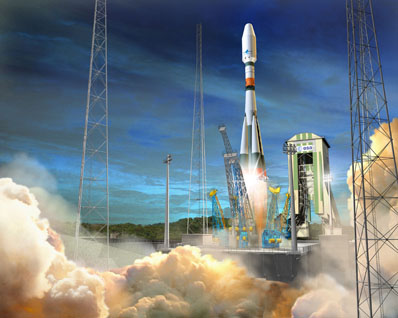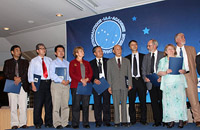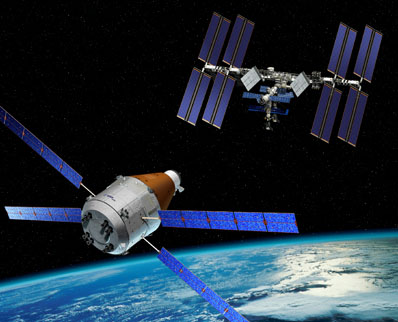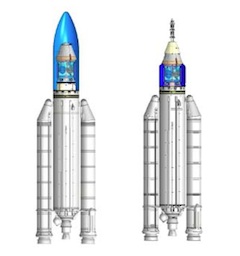E
EarthlingX
Guest
http://www.esa.int : Global space event in the Golden City
http://www.spaceref.com : High-Level Space Leaders and Young Professionals Start Debates on Key Space Issues at the Space Generation Congress 2010
http://www.spaceref.com : Thousands Gather for the 61st International Astronautical Congress (links in the article)
http://www.iac2010.cz : 61st International Astronautical Congress
7 September 2010
Prague: the Golden City
This month the International Astronautical Congress will be held in Prague for the first time in 33 years. The global event highlights the growing activities in space industry, science and education in the Czech Republic — ESA's newest Member State.
The 61st International Astronautical Congress (IAC) will take place in Prague from 27 September to 1 October. The annual congress encourages the advancement of space knowledge and enables the global space community to share its experience and deepen worldwide cooperation.
The event spotlights the long space research and development history and ambitions of the Czech Republic, which joined ESA in 2008.
The Czech Space Office (CSO) was established in 2003, when the country became one of the first to join ESA's Plan for European Cooperating States (PECS).
http://www.spaceref.com : High-Level Space Leaders and Young Professionals Start Debates on Key Space Issues at the Space Generation Congress 2010
...Source: Space Generation Advisory Council
Posted Thursday, September 23, 2010
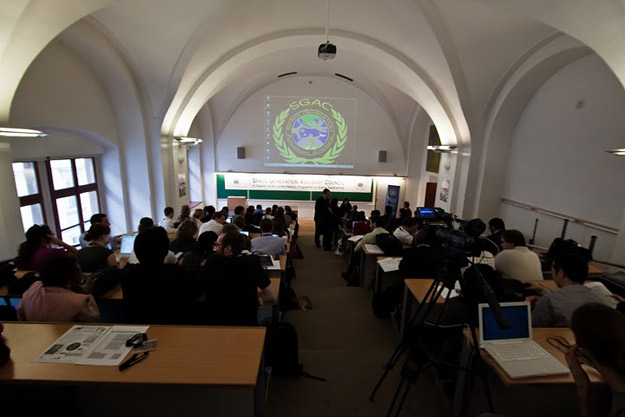
SGC 2010 Opening Ceremony at Charles University, Prague
Between 23 and 25 September 2010, Prague, Czech Republic will become the headquarters for international space matters. High-level space leaders and young professionals in the sector will come together to debate the latest space topics of interest at the Space Generation Congress (SGC) 2010, the annual conference of the Space Generation Advisory Council (SGAC). The discussions will focus on five major themes: Industry, Agency, Climate, Exploration and Outreach.
...Confirmed speakers include:
- Barbara Adde: Policy and Strategic Communications (PSC) Manager for the National Aeronautics and Space Administration's (NASA's) Space Communications and Navigation (SCaN) Program
- Charles F. Bolden: NASA Administrator
- Ben Corbin: Aerospace Engineering and Planetary Science Masters Student at the Massachusetts Institute of Technology (MIT)
- Chris De Cooker: Head of the International Relations Department at the European Space Agency (ESA)
- Berndt P. Feuerbacher: President of the International Astronautical Federation (IAF)
- Mike Kearny: Chairman and General Secretary of the Consultative Committee for Space Data Systems (CCSDS)
- John Logsdon: Professor Emeritus at George Washington University's Elliot School of International Affairs
- Clayton Mowry: President of Arianespace, Inc.
- Zdenek Nemecek: Dean of the Charles University Department of Mathematics and Physics
- Dumitru Prunariu: Chairman of the United Nations Committee on the Peaceful Uses of Outer Space (UN COPUOS)
- William Watson: Executive Director of the Space Frontier Foundation (SSF)
- Ray Williamson: Executive Director of the Secure World Foundation (SWF)
- Jim Zimmerman: President of International Space Services, Inc.
...For the biographies of the moderators, rapporteurs, subject matter experts, and speakers of each session please refer to:
http://spacegeneration.org/index.ph...40-the-september-newsletter-has-been-released
The full programme of the conference, which takes place at the Charles University (Malostranske nam. 25, 118 00 Praha 1), is available here (PDF).
For additional information please visit the SGC 2010 website.
Follow us on Twitter during the congress: http://twitter.com/sgac or by using #SGC2010
http://www.spaceref.com : Thousands Gather for the 61st International Astronautical Congress (links in the article)
...By Marc Boucher
Posted Wednesday, September 22, 2010
The 61st International Astronautical Congress (IAC) will take place in the beautiful Czech Replublic capital of Prague between Monday, September 27th and conclude on Friday, October 1st with a Gala Dinner. To date over 2500 delegates have registered according to an IAC representative with an expected 3000 delates in total.
The IAC is organised by the International Astronautical Federation (IAF) and the local organizing committee, the Czech Space Office. This is the second time the IAC meeting has been held in Prague having previously been held in 1977. At that only the former Soviet Union and the United States participated in manned space flights. Since then astronauts from 34 other countries have been in space including China which is now only the third country with the ability to launch humans into space.
This years congress theme is "Space for Human benefit and exploration" and with 13 technical sessions which are further subdivided into over 73 sub-sessions there's something for every delagates interest. The theme of the congress reflects the importance of practical applications of space to everyday life as an increasing number of contries realize the benefits of space applications to their citizens lives. As well the theme reflects humanities desire for greater space exploration.
In conjunction with the IAC there are several other events ongoing. They include the 20th United Nations/IAF Workshop on "Global Navigation Satellite Systems Applications for Human Benefit and Development" and the Space Generation Congress, both which precede the start of IAC. The Space Generation Congress is the annual meeting of the Space Generation Advisory Council which brings together the top university students and young professionals who have been selected from among applicants from the Space Generation international network.
Also preceeding the start of IAC on Sunday, September 26th will be the International Academy of Astronautics (IAA) Academy Day will be held jointly with the Czech Academy of Sciences.
During the IAC other events include the International Air and Space Law Association which will hold its Moot Court Finals. The Moot Court competition was created to provide an opportunity for students to participate in an international moot court competition in space law.
Another event ongoing during the IAC is the Cluster Forum. The forum gathers decision makers and business developers from major corporations, large and small space agencies, smaller businesses, consulting firms and universities. Highlighting the Cluster Forum are the four forum sessions during IAC; the Space Industry Forum, the Nanosatellite Fair, the B2B and Knowledge Sharing Forum and the Central and Eastern Europe in Space Forum.
Climate change is also on the agenda as goverment representatives from nations around the world will be gather to particiapte in a dialogue about the use of space technology to diagnose climate change and to develop countermeasures.
The congress will open up with an opening ceremony which will showcase Czech culture through its history including medieval dance and music to contemporary artists.
This story is part of a special presentation by SpaceRef on The 61st International Astronautical Congress. For more news during the congress please visit our special page at:
http://spaceref.com/news/iac2010/
http://www.iac2010.cz : 61st International Astronautical Congress


